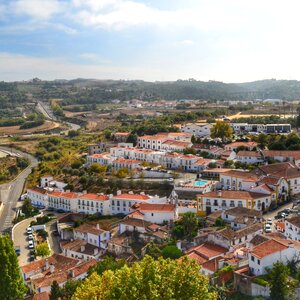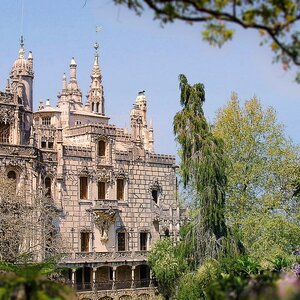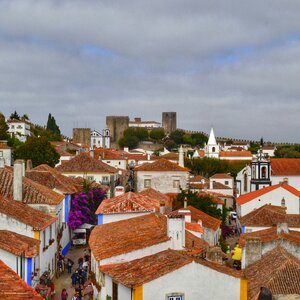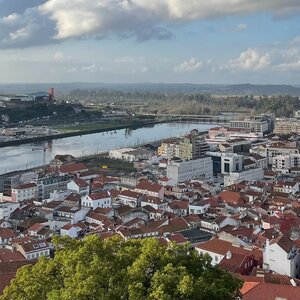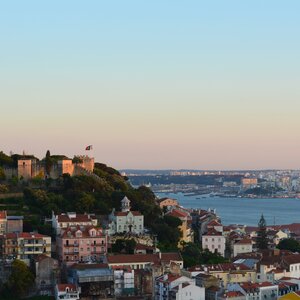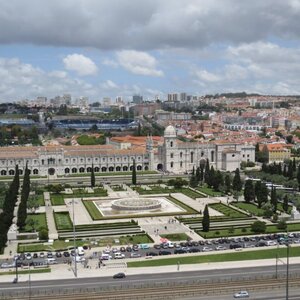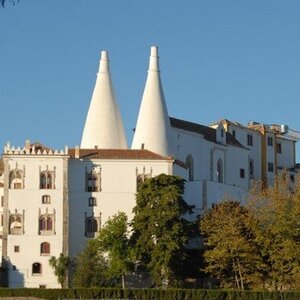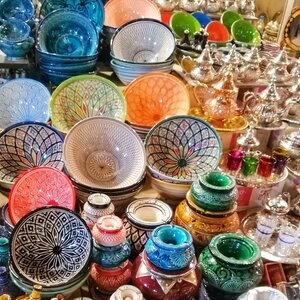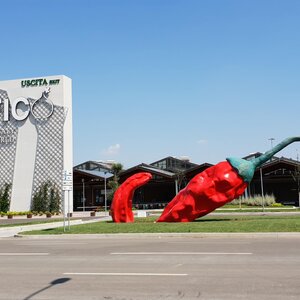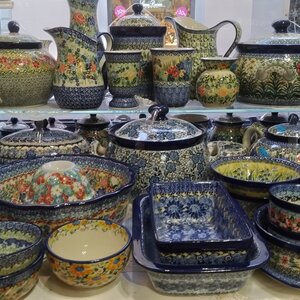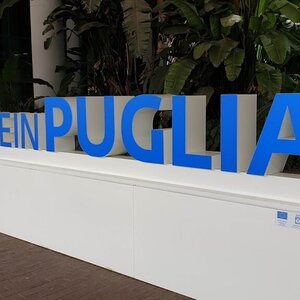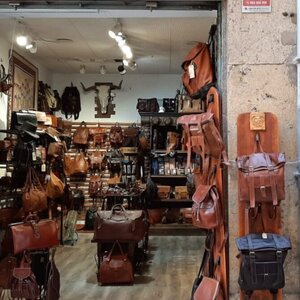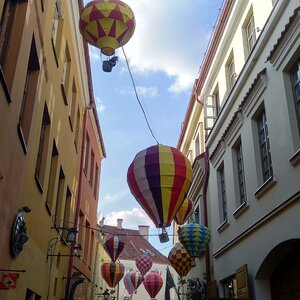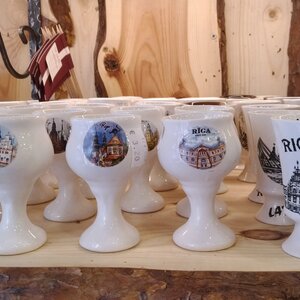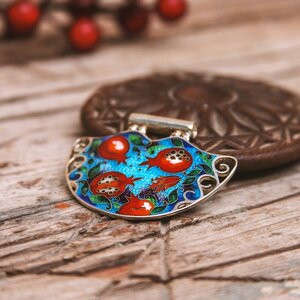Port wine or a port wine glass
Porto gave its name not only to its country, but also to a whole type of fortified wine. It was already made here in the Middle Ages, and wine-making in general in the vicinity of Porto was practiced by the ancient Romans.
The Douro River Valley, which separates Porto and its suburb Vila Nova de Gaia, is Portugal’s most famous wine region. Both port and unfortified wines are made in the area. Already in the early 18th century, port was a key product of the region, so important that here, for the first time in history, they tried to establish its production area as a guarantee and symbol of quality. This restriction of the production area made the Douro Valley the first wine region in the world with officially marked boundaries.
Fortified wines have been produced on the steep banks of the Douro since at least the 14th century. Port wine was shipped in barrels on small sailing boats — rabelos — down the river, where they were aged in the cellars of Vila Nova de Gaia. These cellars are still used for maturing port wine today.


You can either go to supermarkets or enotecas for port wine, or you can go to the other side of the Douro and look directly at the producers' factories. Most of them hold tastings where you can try different types of port wine beforehand. It is not necessary to buy port wine in souvenir stores. You will not be left without port wine even if you fly only with hand luggage: there is an incredibly huge selection of wines in Duty Free at Porto airport.

Port wine glass
At the tasting you will be served port wine in the right glass — the same glass you can bring home, otherwise what will you use to drink the port you brought back? The classic port wine glass is tulip-shaped. It concentrates the aroma and neutralizes pungent alcohol vapors, and the long stem prevents your hands from heating the drink. The volume of the glass is 120—140 ml, and it should be filled about halfway.


The wine of the Douro Valley
Port wine was for a long time such a successful product on the European market that the winemakers around Porto did not even try to make unfortified wines (not counting antiquity). It was only after World War II that the region began to experiment with wines based on French models.
The Douro Valley region has the highest wine classification, Denominação de Origem Controlada, so in the store look for the words Douro DOC on the label: this means that the wine is made in this region and meets all the requirements of its class.
The best wines of the Douro are red. The local Portuguese grape varieties used in production are Turiga Nacional, Turiga Franca, Tinta Barroca, Tinto Cao and Tinta Roris (Tempranillo). Due to the convoluted history of local winemaking, it is common practice for vineyards to grow several varieties at once — often even the winemaker does not know the exact proportion of different grapes in their wine.
You can buy wines in supermarkets, enotecas or on a wine tour with tasting. By boat on the Douro River, by train along the river or by car, you can reach a winery (or several), taste the wines and choose something for yourself.


Soaps and cosmetics from Porto
Oprah Winfrey is said to have mentioned Portuguese soap on her show in 2007, and since then Portugal’s soap factories have been booming. It’s unlikely that Oprah’s native advertising could create an entire industry from scratch — but it could certainly tell the world about a traditional, high-quality product from a small corner of the Old World.
In fact, soap making in Portugal has a very long history. For example, the most famous factory, Claus Porto, has been making soap since the late 19th century. Unlike modern recipes, the ancient formulas are incomparably more luxurious: traditional soap has a soft and pleasant «creamy» foam, economical consumption and a fragrance that does not weather away, but aromatizes the bathroom to the last crumb of bar.
Premium brand Claus Porto creates soap like an artist, using expensive fragrances, good formulas and beautifully illustrated packaging. The brand’s store on Rua das Flores is filled with hundreds of colorful packs of soap and gift sets. The Musgo Real collection is created exclusively for men and includes soaps, shaving creams, aftershave lotions and balms, as well as colognes. The rest of the Claus Porto collections are unisex.
Ach. Brito is a more economical brand. It is a large manufacturer, it owns Claus Porto. But if the latter creates products in the premium segment, Ach. Brito makes more affordable soaps and cosmetics for everyday use. Their products can be found in supermarkets, souvenir stores and at the airport.
Castelbel is a younger brand producing soaps, cosmetics and home fragrances in the «affordable luxury» segment: inexpensive, but beautiful and of high quality. In the premium segment they perform with the brand Portus Cale — this is the ancient name of Porto, which gave its name to the whole country — «Portucale», and the collection itself is designed in the traditional style: in ceramic packaging, with azuleju prints. The manufacturer has a brand store in the center of Porto, near Claus Porto.





Cork souvenirs
Although bags and caps made of cork have flooded all souvenir stores in Europe and already seem a little more interesting than magnets, if you want to bring a cork souvenir from somewhere, it should be from Portugal. This country is the world’s largest producer of cork, and the most cork trees grow in the Alentejo region in the south of Portugal.
What only do not make now of this natural material: costume jewelry, purses, hats, shoes, bow ties, suitcases, fans, books.

Canned sardines
Sardines have historically been one of the pillars of the Portuguese economy. Sardines have made fortunes, but they are a democratic food, easy to get even for the poor. Nowadays, Portugal seems to have a cult of sardines, with an entire festival in Lisbon dedicated to them and artists competing in creative renditions of the little fish.
Part of this cult is canned sardines in jars. They are served as an aperitif in restaurants, and the shelves in stores are littered with them. But what can surprise a simple can of sardines? In Portugal, it’s not only the filling for all tastes, but also the packaging. Like kraft soap, sardine cans are wrapped in paper with artistic illustrations in every style, from retro to modern design.
There are several canneries in the Porto area, including in Matosinhos, so sardines are a common everyday food here, not a tourist attraction. Canned sardines come natural or with olive oil, supplemented with lemon, garlic, tomatoes or spicy piri-piri oil.
Porto and Vila Nova de Gaia have a few stores dedicated exclusively to sardines, but this is a tourist attraction. Locals buy them in supermarkets and markets. Check out the Mercado do Bolhão market — it’s a newly renovated, historic market where you can grab a bite to eat and buy local produce and souvenirs.



Olive oil
Portugal is a major producer of olive oil, and the country’s best oil is produced in the northeast, in the Tras-os-Montes region, up the Douro River on the border with Spain. This is historically a very isolated area where the original Portuguese culture has survived, the people speak a rare language and still live a traditional way of life. Olive oil is often produced on quintas, farms where olive trees grow alongside vineyards. Visits to these quintas are usually included in tours of the Douro.
Unlike in Italian, where olive oil is called Olio, the Portuguese word Azeite comes from the Arabic «az-zayit», which translates to «olive juice». This emphasizes the peculiarity of olive oil: it is pressed not from the seeds, as most oils are, but directly from the pulp, like the juice of a berry or fruit.

Azuleju and ceramic souvenirs
Many «capitals» have the art of ceramics, but ceramics from Portugal are recognized even by those who have not been there. The most common style is blue and white flat tiles with artistic designs. Even on soap packaging you will see these motifs.
Azulejo was brought to Portugal by the Arabs during their rule of the Iberian Peninsula. At first, the tiles were colored and embossed, and the motifs were geometric. In the 16th century, the technique of flat tiles with paintings and antique motifs was adopted from the Italians. During the period of cooperation with Holland in the XVII century, blue colors and genre subjects appeared. And in the XVIII century Rococo returned polychrome to ceramics. In the XIX century industrial production made azulezhu cheap and available material — and then the tile went to the people and began to decorate the facades and interiors of buildings. Nowadays, flea markets sell antique tiles from old buildings. Be careful when buying, don’t encourage vandalism: according to the Portuguese press, many of these tiles are illegally removed from the facades of historic buildings.


You should buy ceramics in the city — there is a very limited selection of azulejo souvenirs at the airport, mostly unpresentable magnets and mugs. Look for azuleju in Porto itself: in ceramic workshops and souvenir stores you can buy a single tile, a full wall panel or miniature azuleju in the format of costume jewelry — rings, earrings and pendants. The motifs often repeat tiles from historic buildings: palaces and churches.
The azulejo tradition continues in contemporary handmade ceramics. The cost of highly artistic works is quite high: the mug in this photo costs about 30 €, the tea pair 60 €, the plate more than 80 €.

Portuguese cheeses
Although the country’s best cheeses are thought to be produced in the Azores, the neighborhoods around Porto also make cheeses in the DOP category — protected by origin. They can be found in quintas, markets and supermarkets.
In the Tras-os-Montes region, they make a very hard, salty cheese from Transmontano PDO goat’s milk. It has a naturally bright yellow color, while the red variants are extra chili pepper flavored.

Super Bock beer
Beer as a souvenir? Why not, when this beer is the most popular beer in Portugal and the most famous Portuguese beer in the world, and it is produced in the suburbs of Porto. The company was founded back in 1890. «Super Bock» is the «default» beer in all local bars, and in stores a can costs less than €1. Along with the usual lager, there are stout, radler (a mixture of beer and lemon juice), abbey ale and other varieties.
You can sign up for a tour at the factory, which is located in Matosinhos, half an hour’s drive from the center of Porto. And you can buy beer in any supermarket or at the airport.



